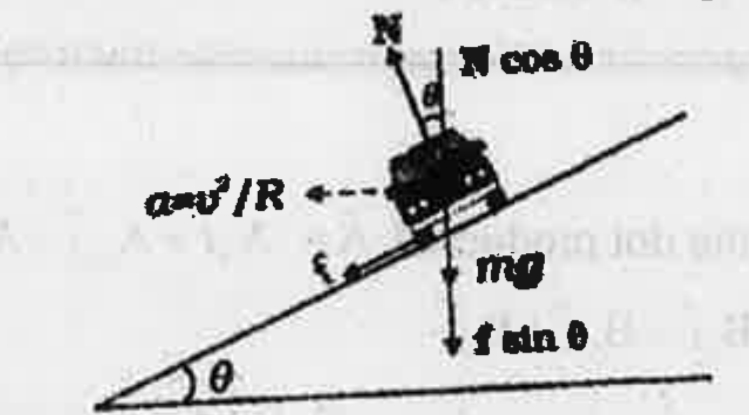How does banking of roads reduce wear and tear of the tyres ?
When a curved road is unbanked force of friction between the tyres and the road provides the necessary centripetal force friction has to be increased suitably that will cause wear and tear . However when the curved road is banked a component of normal reaction of the ground provides the necessary centripetal force . The role of friction becomes secondary Therefore wear and tear of the tyres is reduced .
Similar Questions
What is banking of roads ? Why is it essential ? Derive the equation for the angle of banking ignoring friction between the tyres and the road.
View Solution(A): Banking of roads reduces wear and tear of the tyres.
(R) : Dependence on friction to provide centripetal force increases with banking of a road.
View Solution(A) : Banking of roads reduces wear and tear of the tyres. (R ) : Dependence on friction to provide centripetal force increases with banking of a road.
View SolutionThe schematic diagram of the circular motion of a car on a banked road is shown in the figure.
The optimum speed of a car on a banked road to avoid wear and tear on its tyres is given by _______
i)√Rgtanθ
ii) √RgCotθ
iii) √RgSinθ
iv) √RgCosθ
View SolutionA circular race course track has a radius of 500 m and is banked at 10^@ .The coefficient of static friction between the tyres of a vehicle and the road surface is 0.25 Compute: The optimum speed to avoid wear and tear of the tyres.
View SolutionA : Banking of roads reduces the wear and tear of the tyres of automobiles. R : By banking of the roads one component of the normal reaction on the automobile contributes to necessary centripetal force.
View SolutionThe....... that cover the tip of bono reduces the wear and tear of the bones.
View SolutionBanking of roads at curve is necessary so as to avoid (A)overturning of vehicle moving with maximum speed. (B) the dependence of centripetal force on the force of friction. (C) rough nature of road surface which increases the force of friction and causes the wear and tear of tyres of vehicle. (D) skidding of the vehicle.
View Solution

